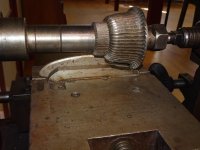I was also thinking of Eibar, I think there are or at least were many small shops in the area rather than a few big ones such as around Toulouse over in France. I live in the Pyrenees on the French side near the Mediterranean so it is all not too far away. There is also plenty of investment casting around Barcelona (automotive etc) which is closer to me. Time to look for technically minded Spanish speakers in my network I guess as there isn't going to be much English over there.
Luke
Not a major problem. The two top "western" languages in global commerce are bad English and fair-decent Spanish. Both languages are highly "fault tolerant", y'see. Try THAT with French!
Spanish in business is common even in Brazil. They have to import and export to a whole lot more than just Portugal! Harder to get a Habanero to speak Columbian-grade Spanish than it is to conduct business in "average" Spanish, all over the Americas.
If you grok any two of English, French, or Italian, take you about two weeks with a good audio course to be able to get by just fine in conversational Spanish.
Written is easier yet. Translators work better on Spanish than on most other languages. Spoken isn't hard. Kinda neat to use a language where each vowel or any word has exactly ONE proper sound, not several. Spanish has way less than half the irregular verbs of English, doesn't scatter them about split-up as the Germans do, and uses the same sentence structure as Mandarin Chinese.
Instead of keeping one in suspense, as in "big white.... house, ass, car, elephant"... wotever.. they go straight for "major key" data, as-in "HOUSE, large, white", etc.
Spoken Basque is harder, but they are "try"lingual folks, will apply their tongue to anything if there is any good to come of it!

Med end of the Pyranees? Sounds more Languedoc than Basque?









 I bet there are some in Spain that might be a better match.
I bet there are some in Spain that might be a better match.